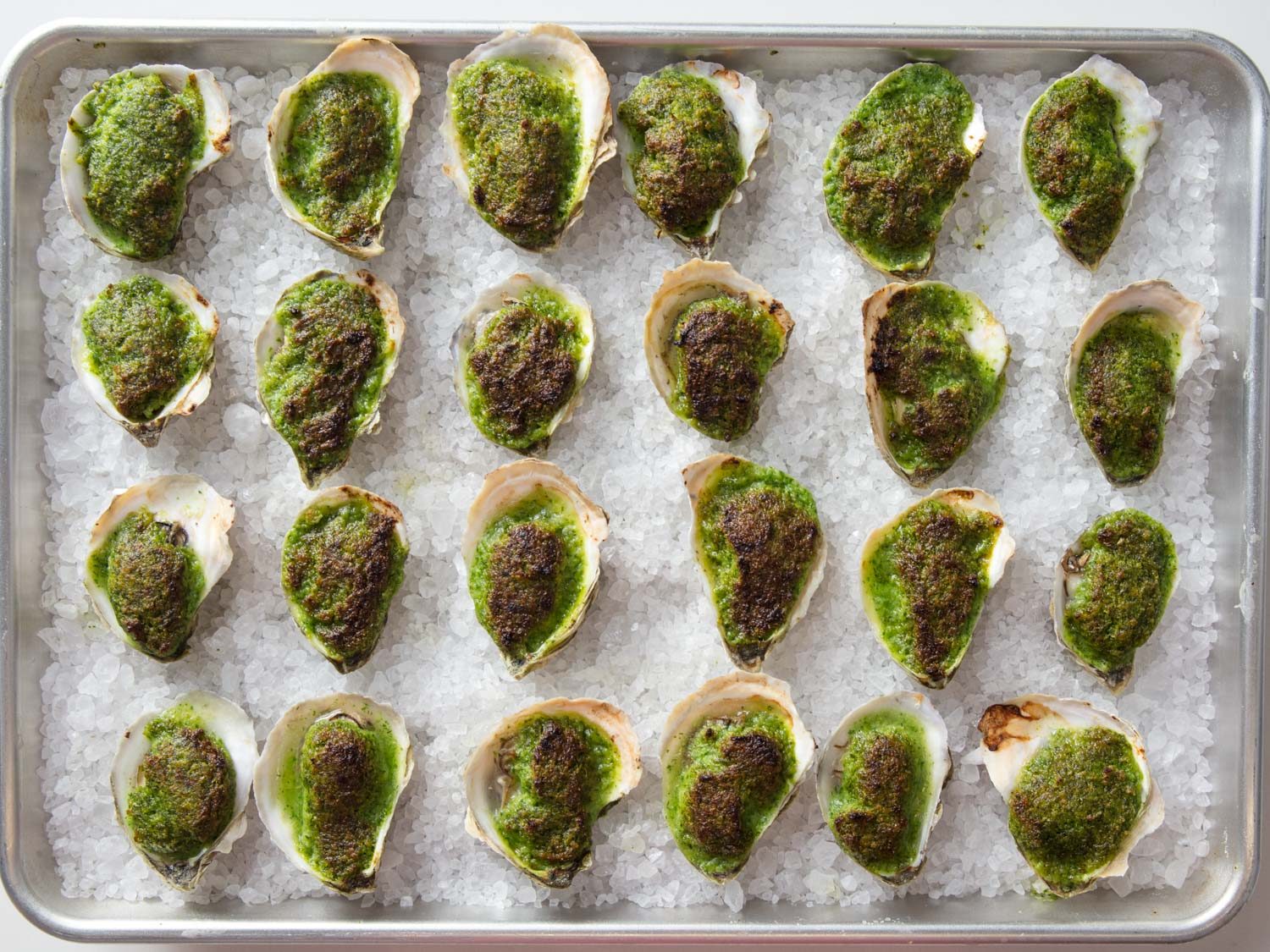
[Photographs: Vicky Wasik]
There aren’t many dishes that have a clear-cut origin story. When researching recipes, we’re used to parsing a lot of folklore and conjecture, with the hope of understanding more about the food we’re cooking by finding out where it got its start. Most of the time this ends up being a fun but futile exercise—maybe French duck à l’orange actually came from Italy, or maybe not. But there are a few iconic dishes we can track back to a source. Oysters Rockefeller is one of those dishes.
We know the dish was invented by Jules Alciatore at Antoine’s restaurant in New Orleans in 1889. There is one problem though: To this day we still don’t know what exactly is in the original oysters Rockefeller. The story goes that Jules needed to find a more affordable and readily available alternative to French escargots, and he decided to tweak the popular snail preparation by pairing it with native Gulf oysters. It’s a secret recipe guarded to this day by the owners of Antoine’s with the same vigor as Colonel Sanders’s blend of 11 herbs and spices. We know oysters Rockefeller is an incredibly rich (what’s in a name?) dish of oysters on the half-shell topped with a buttery green sauce and then roasted or broiled. Every non-Antoine’s rendition of the dish is an approximation. And in some ways, that’s liberating. When nobody else can claim to make the “true” version of a dish, you don’t have to worry as much about getting it totally right.
While we may never know the exact ingredients in Antoine’s oysters Rockefeller, it’s fun to play culinary Carmen Sandiego and make some educated guesses. The main matter of debate is whether or not the green color of the topping is achieved with the help of spinach. According to representatives from Antoine’s, spinach is not an ingredient in the original Rockefeller. This jibes with the snail story—escargots are usually cooked with a garlic and parsley compound butter, not spinach.
In 1986, the writer William Poundstone snuck a couple Rockefeller oysters out of Antoine’s and had them analyzed in a lab. The results indicated the topping did include parsley, as well as celery and green onions. Thanks to the excellent new food podcast Proof, I now know celery was the it vegetable of the Victorian era, so it makes sense that it would be used in a well-heeled restaurant dish of that time. Absinthe was also popular in New Orleans then, and I came across old menus in my research that indicate it was a common ingredient in oysters Rockefeller before it was made illegal in 1915. Absinthe is legal again, so we might as well use it, no?
After picking through historical tidbits like these, I cobbled together my best-guess version of classic oysters Rockefeller and then went off-book to make a Mexican-inflected version of my own. If every version of this dish is wrong, I figured we might as well celebrate that.
How to Make Classic Oysters Rockefeller
Make Some Green
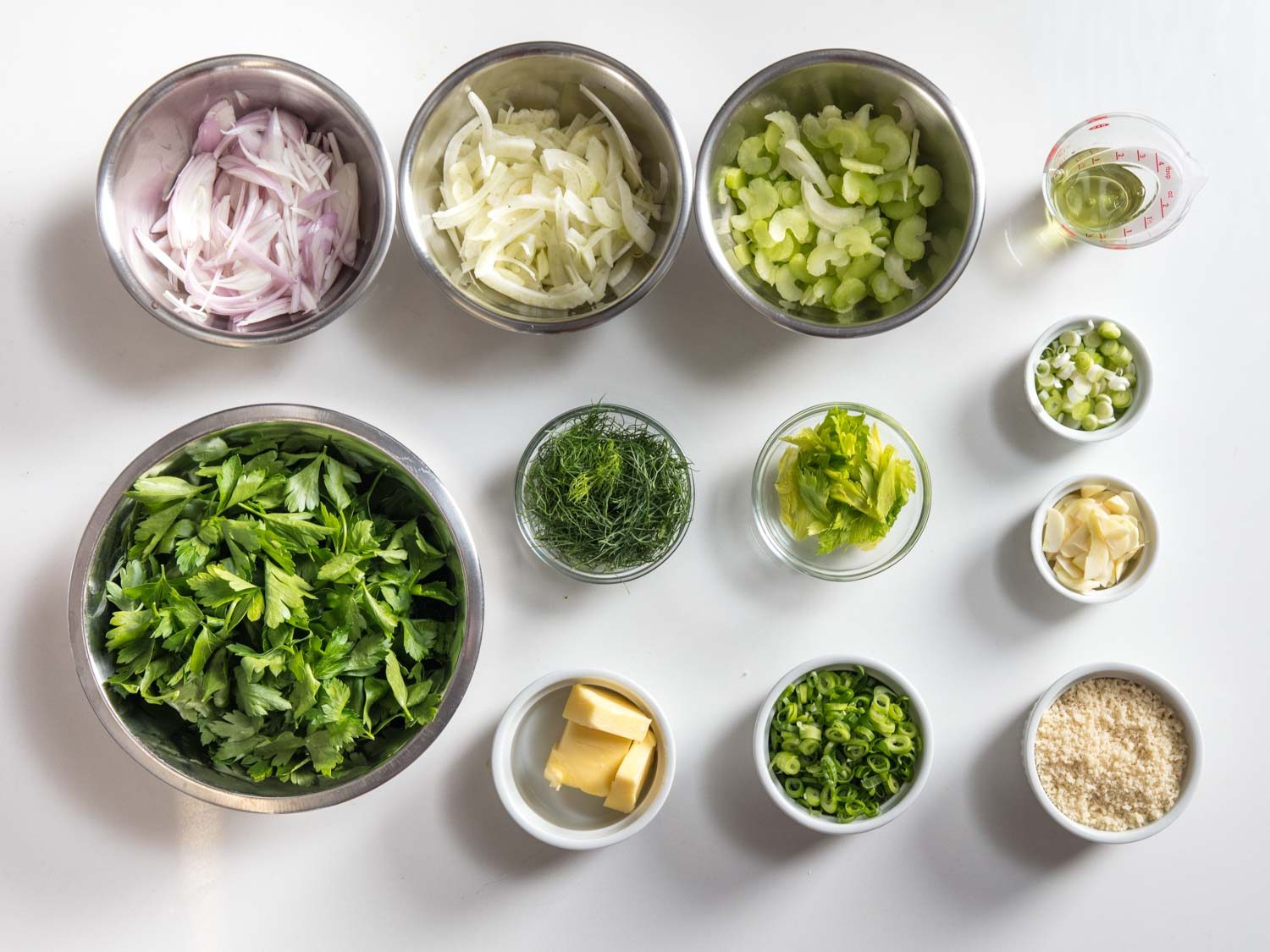
For my take on oysters Rockefeller, I use the classic escargots compound butter of shallots, garlic, and parsley as a starting point. My research helped inform my additions of green onions and celery (I’m trying to get on that Victorian bougie vegetable tip), and fennel provides a fresh vegetal complement to the anise notes of absinthe. I temper the alliums’ bite by cooking the garlic, shallot, and scallion first in order to not overwhelm the flavor of the oysters themselves. Because we want the topping to end up being a vibrant, rather than an army, shade of green, it’s important to break up the process for the topping, first by cooking the sturdier vegetables to soften and mellow them and then incorporating raw green herbs into the mix in the food processor.
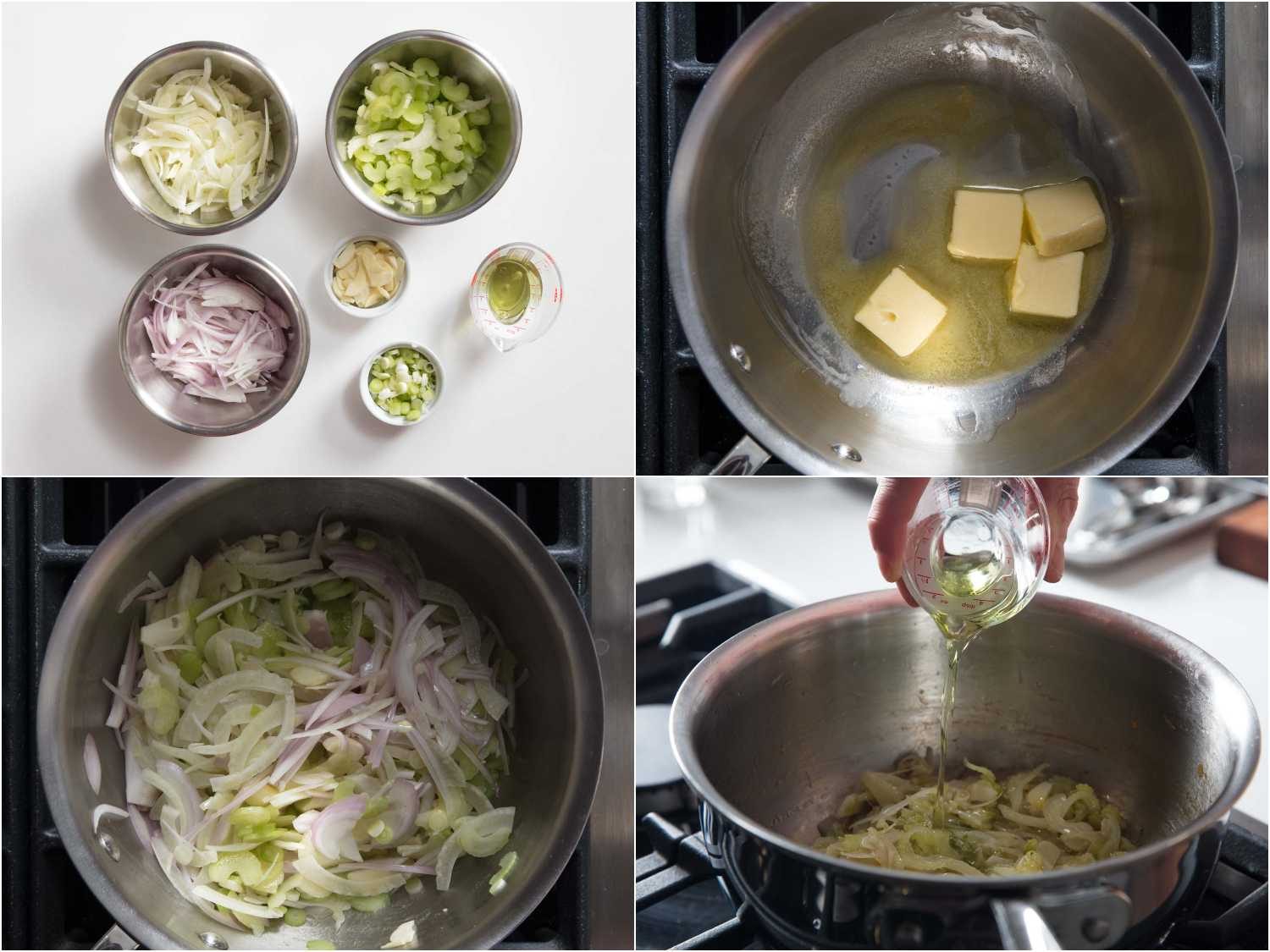
The first step is to sweat garlic, shallots, fennel, celery, and scallion whites in butter. The goal here is to gently cook the vegetables, softening them while also drawing out their natural sweetness as well as water content. Seasoning them early in the cooking process with a healthy pinch of salt helps speed up this process. Make sure you take the time to fully cook down these aromatics, otherwise you will end up with a loose and watery Rockefeller topping.
Once the vegetables are soft and their moisture has evaporated, remove the saucepan from the heat and stir in a tablespoon of absinthe (you can substitute Pernod or Herbsaint here). In order to preserve absinthe’s intense anise notes, I don’t cook the alcohol off at all; for this reason a little bit goes a long way. If you aren’t into anise, or don’t drink alcohol, you can obviously leave this step out.
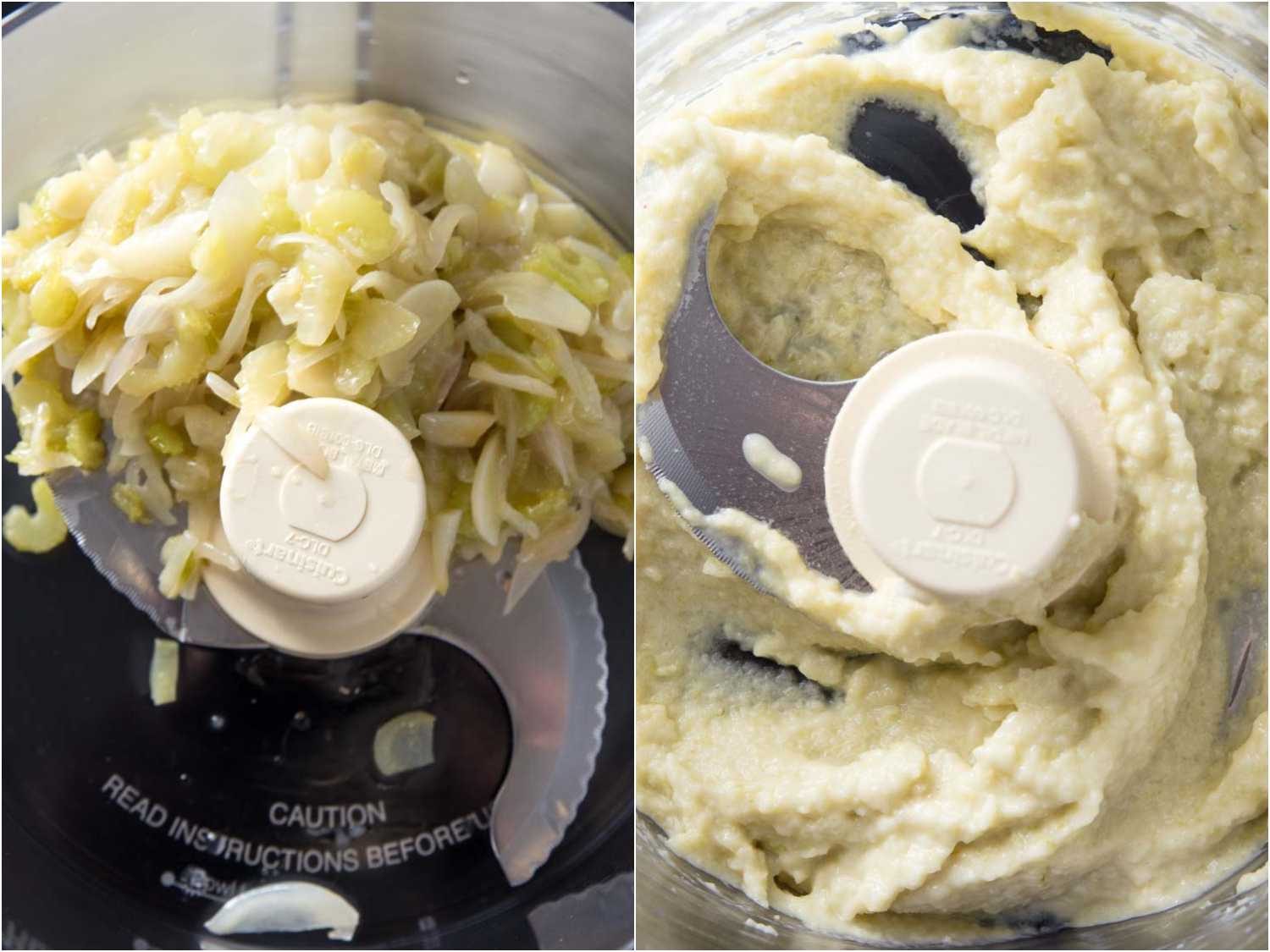
Next, I transfer the mixture to a food processor, process it to a coarse paste, and then let it hang out for a few minutes to cool down slightly. I always like to blend or process vegetables while they are still hot because they break down more readily, giving you a smoother result while also putting less stress on the motor of your appliance.
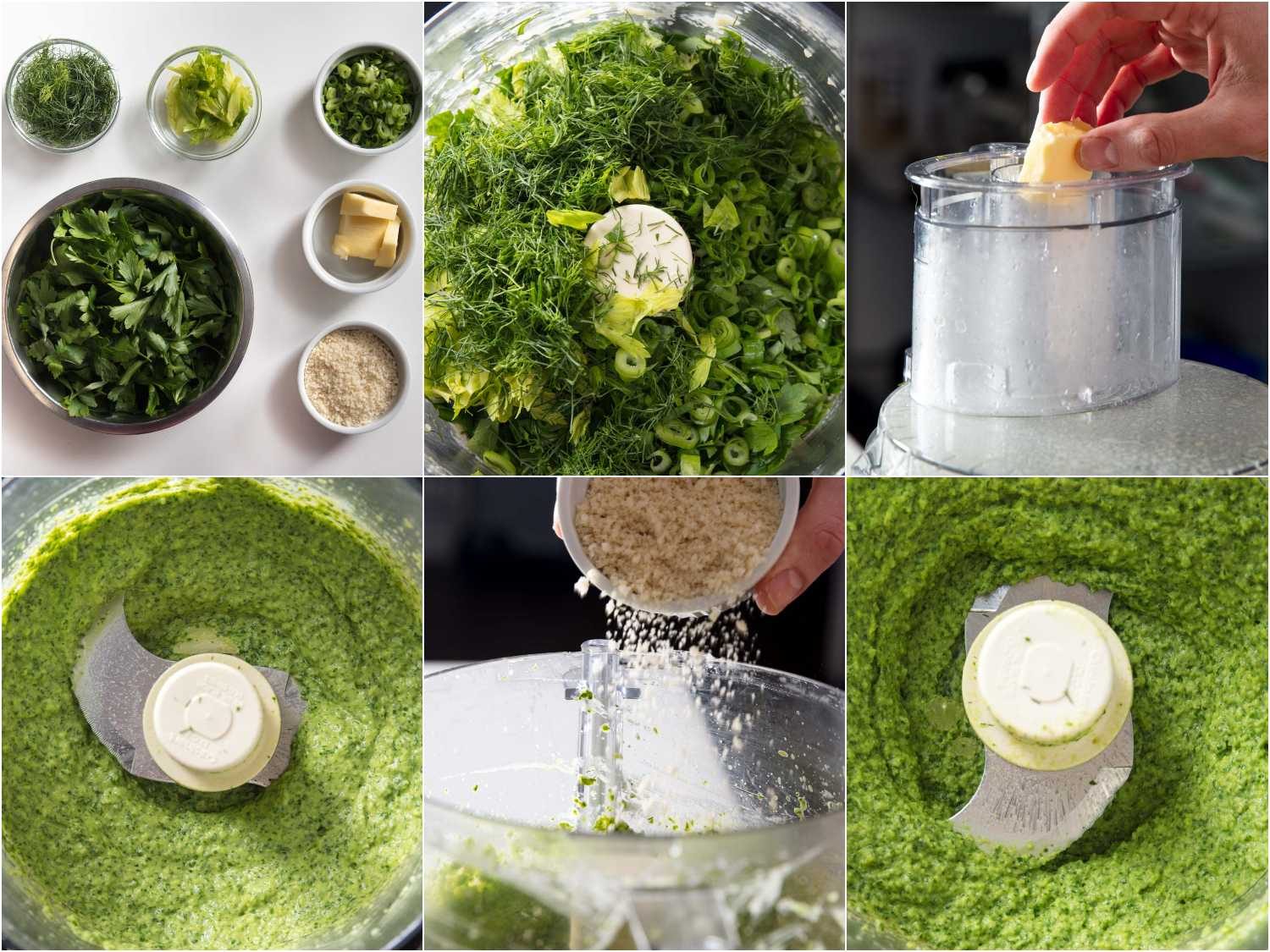
It’s now time to incorporate the greenery. Along with the requisite parsley (again, this dish originated as a riff on traditional escargots, which is all about butter, garlic, and parsley), I add the green parts of the vegetables that I cooked down earlier—fennel fronds, celery leaves, and sliced scallions. I process it all together just until the herbs are broken down and incorporated into the cooked vegetable paste. Then, with the food processor still running, I gradually add room temperature butter, one tablespoon at a time, until fully emulsified. At this point the mixture should be the consistency of a loose pesto.
Finally, in go some panko breadcrumbs, which are processed just until the breadcrumbs are incorporated. The breadcrumbs act as a binding and thickening agent (think Spanish gazpacho) rather than as crunchy topping: Under the broiler, the panko helps stabilize the compound butter as it melts, keeping it from fully melting and breaking in the heat.
The compound butter needs to be seasoned with salt and pepper, but keep in mind the natural salinity of the oysters themselves; this is a situation where you want to be a conservative in your salt application. If you have disposable pastry bags, this is a great time to use them. Bag up the paste, or transfer it to a bowl and cover with plastic wrap, pressing the plastic onto the surface of the paste to prevent a skin from forming and the greens from oxidizing. With the topping squared away, it’s time to get shucking.
Aw, Shucks
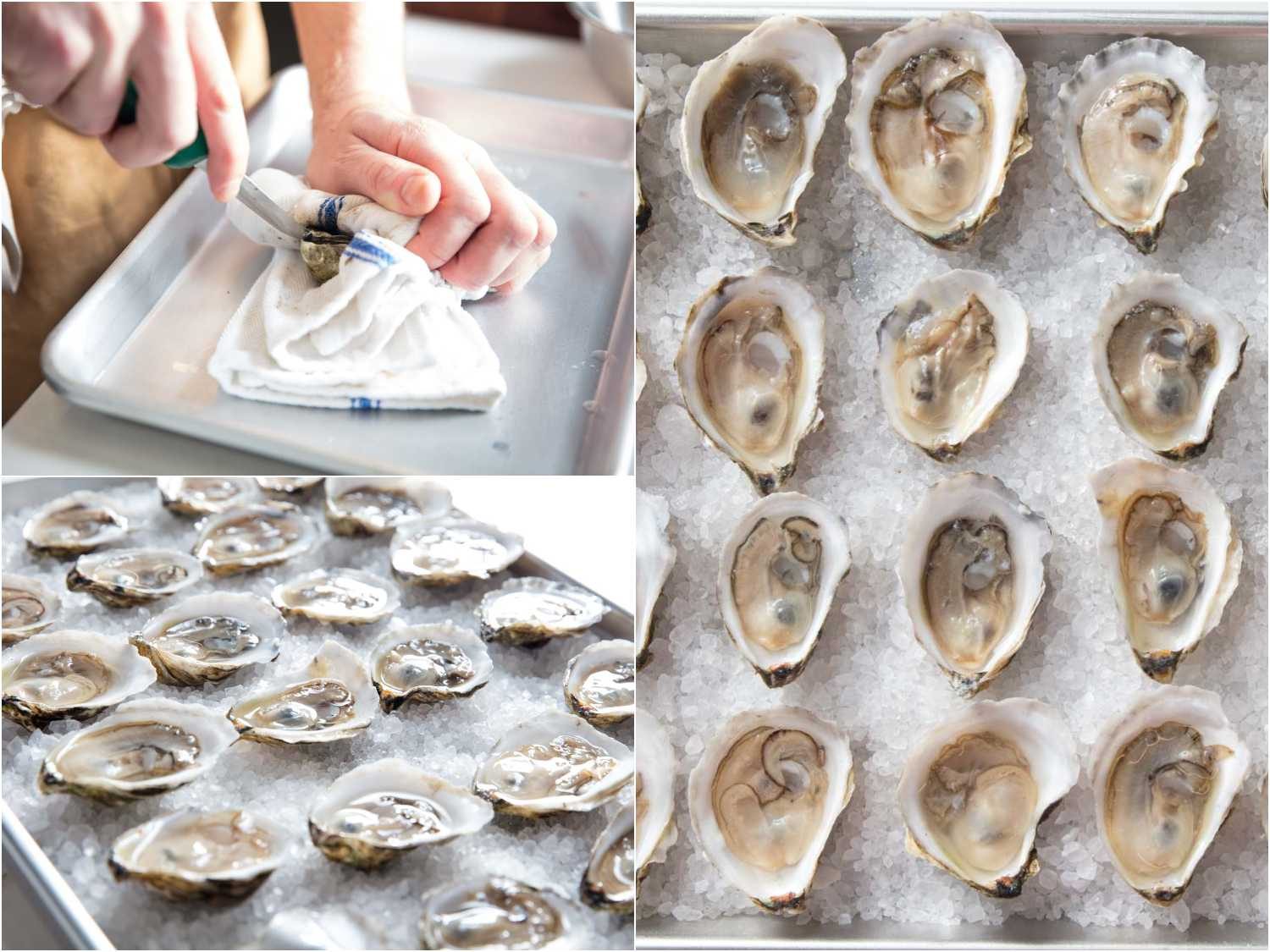
Before busting out the oyster knife, turn on your broiler and position an oven rack in the highest position possible. Set up a rimmed baking sheet to place the oysters on. You have a couple options for doing that: You can either lay down an even layer of rock salt (sometimes labeled “ice cream salt“) on a sheet tray, or you can crumple up a piece of aluminum foil.
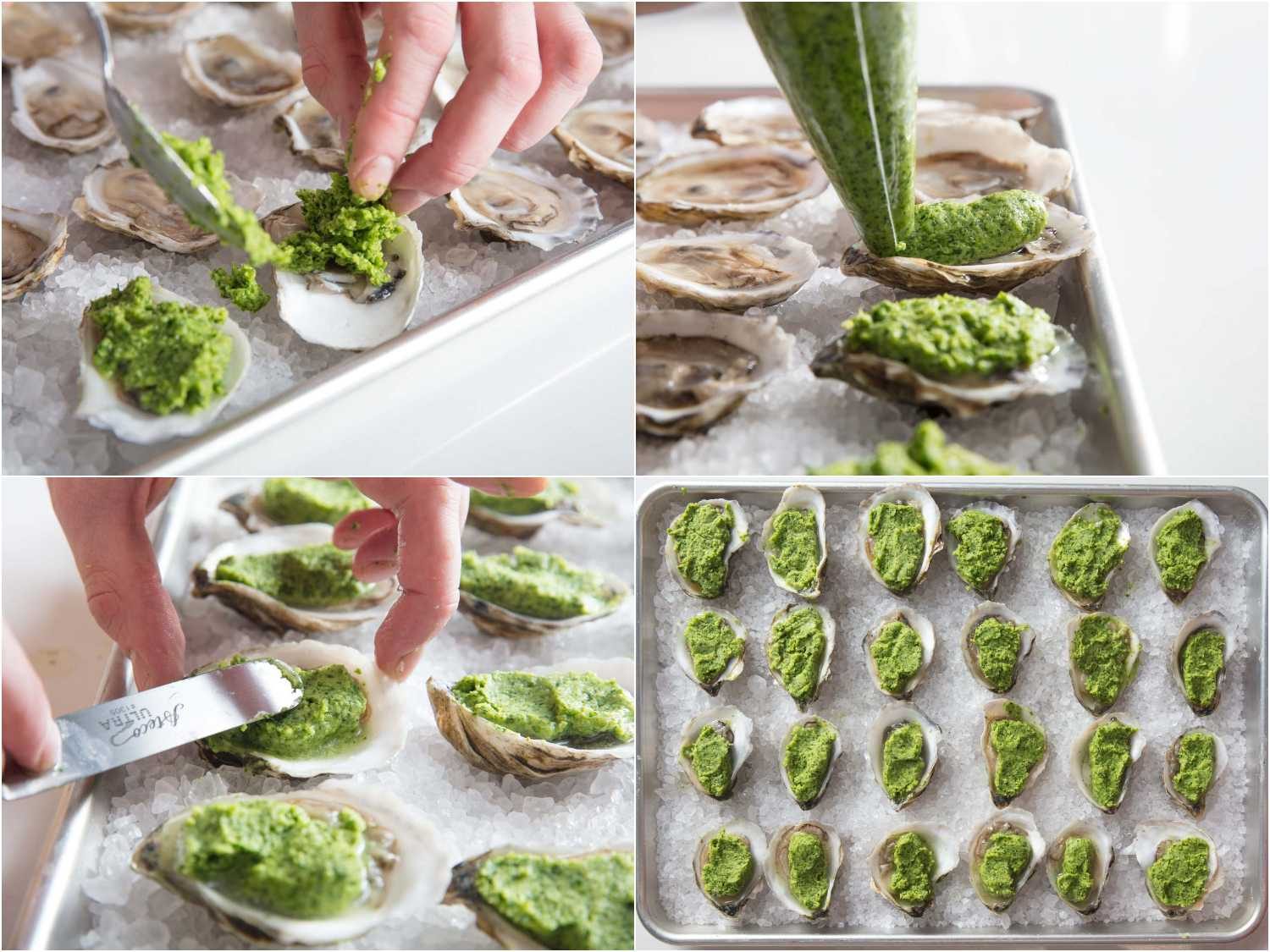
Grab your properly stored and scrubbed oysters from the fridge, and get shucking, arranging the shucked oysters on the prepared sheet tray as you go. Once they’re all shucked, it’s time to cover them with the herb-butter topping. Pipe or spoon a heaping tablespoon of topping over each oyster, and then use a small offset spatula or a butter knife to spread it into an even layer, capping the oysters. Cover them evenly, since we want the topping to shield the oysters from the direct heat of the broiler, which will otherwise quickly overcook them.
The Broil Treatment
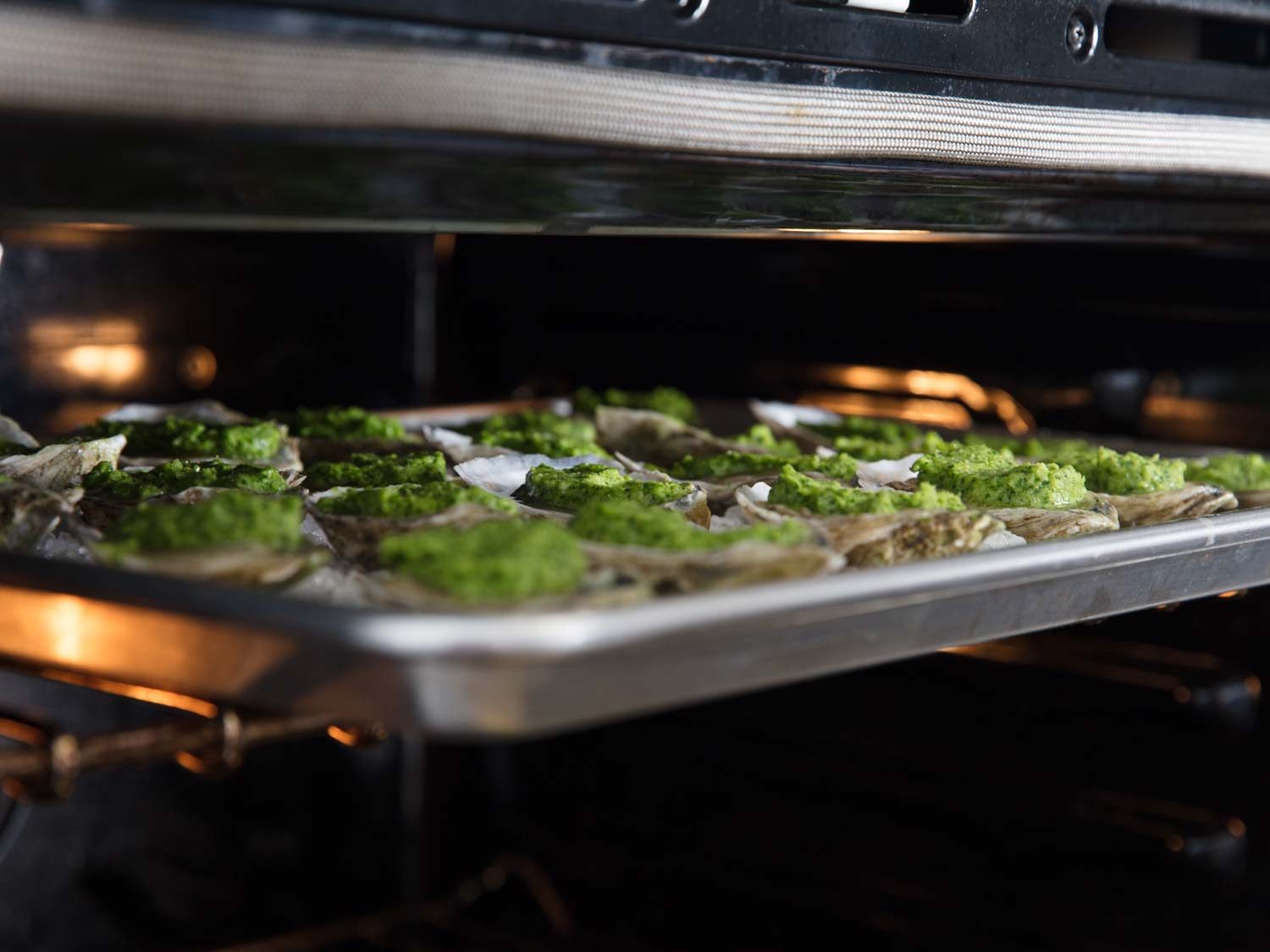
Pop the sheet tray in the oven, and broil the oysters until the topping starts to brown and the oysters are warmed through, which will only take a few minutes. While staring into an oven might not be your idea of fun, I wouldn’t recommend walking away from the oysters at this moment. Home oven broilers are consistently inconsistent, and the last thing you want to do is burn the topping or hammer these beauties into chewy oblivion. I can’t overstate how unpleasant overcooked oysters are to eat; please don’t do it.
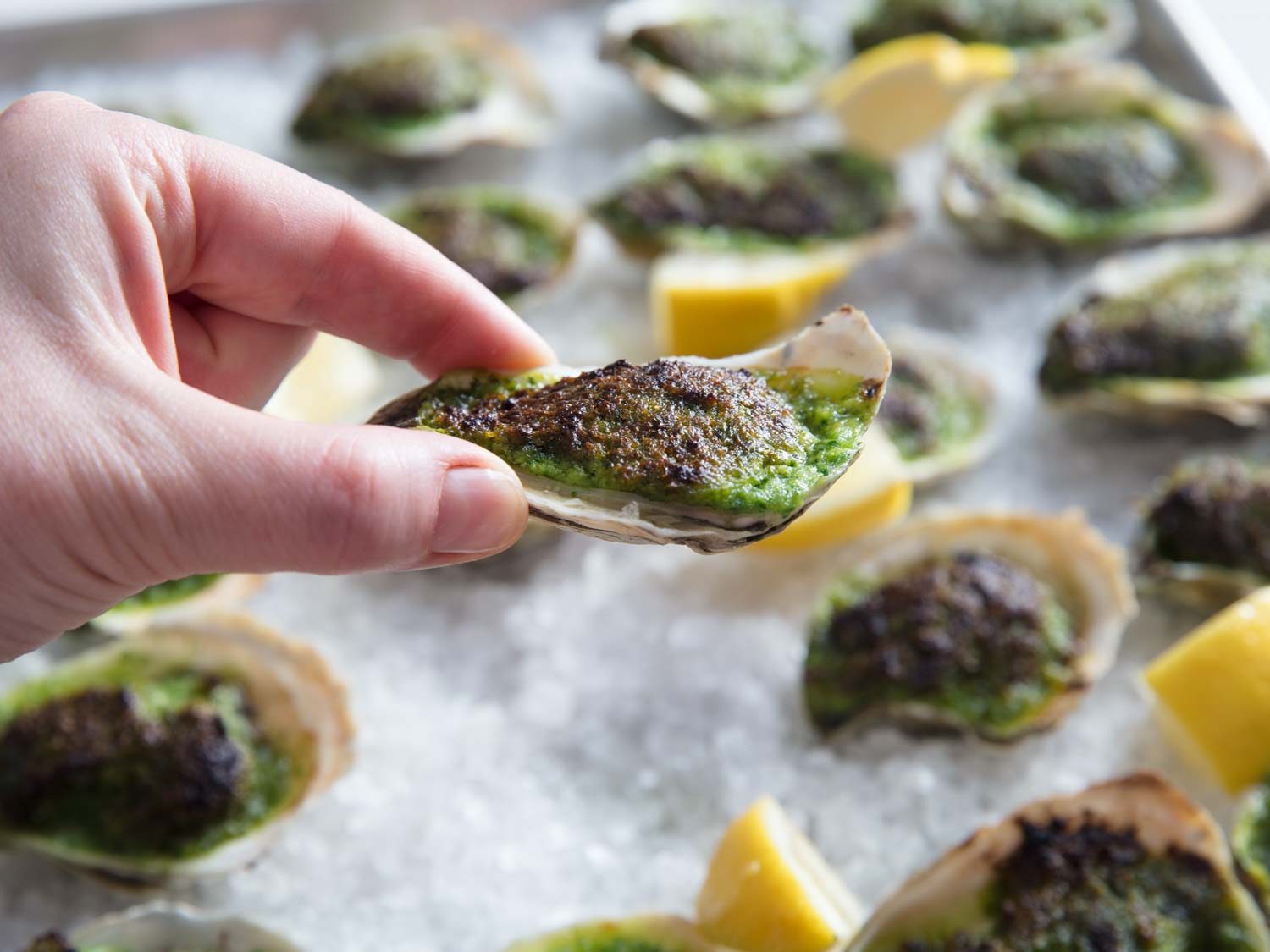
Remove the baking sheet from the oven, and serve up your Rockefellers. How you go about that depends on the type of company you keep and how fancy you want to be. You can just present them straight up on the baking sheet with lemon wedges, or if you are looking to class things up, transfer the oysters to a more attractive serving platter lined with rock salt.
How to Make Oysters Oaxacafeller
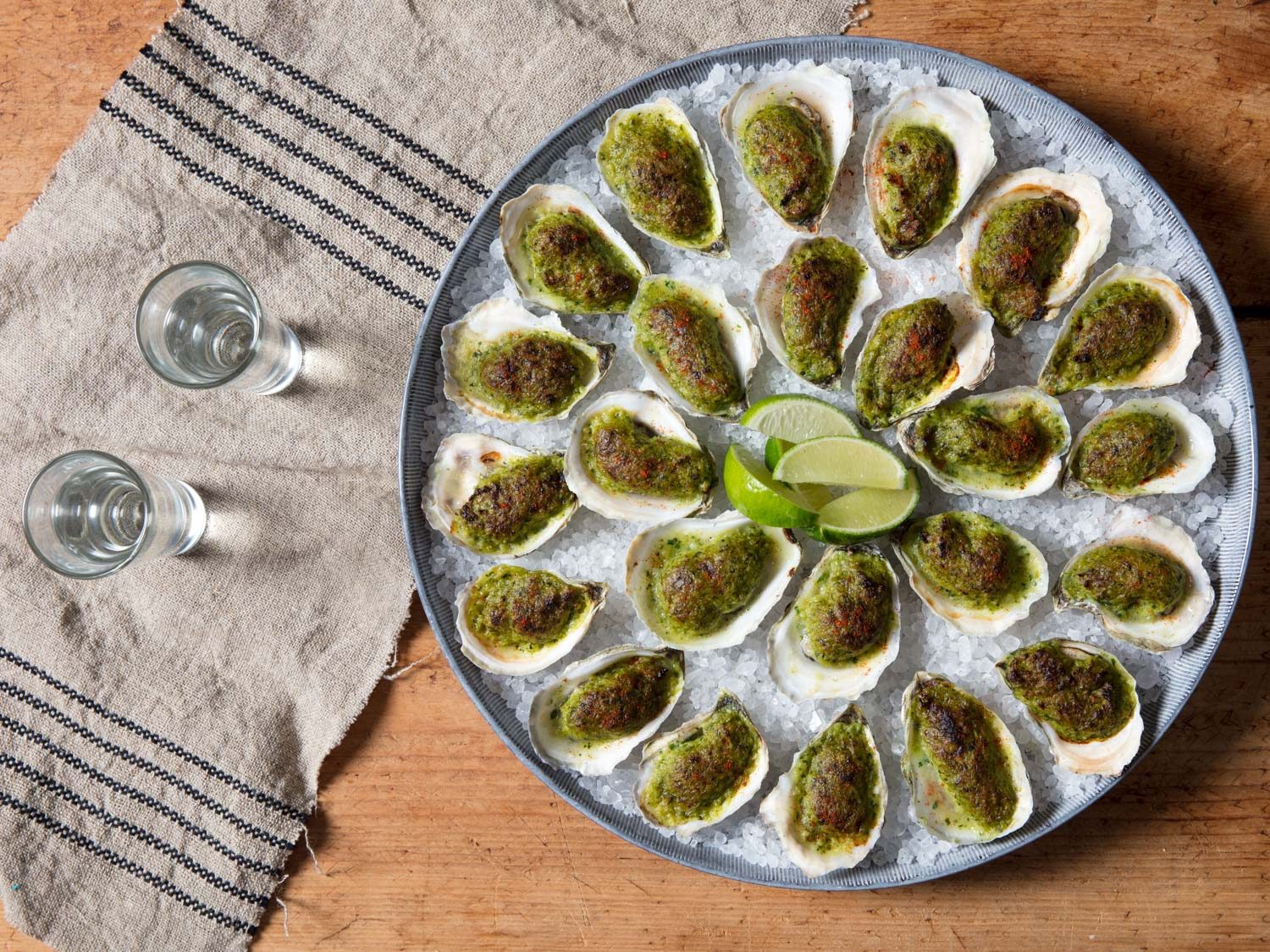
After discovering that non-Antoine’s Rockefeller recipes are more often than not a bad cover of a hit song, I decided that I wanted to come up with a riff of my own that paid truly delicious homage to the original. Reading through poor imitation recipes that paired bivalves with wilted baby spinach, cream, and cheese didn’t really work up my appetite, but the combination of deep green vegetables and dairy reminded me of a dish that does: Mexican rajas con crema.
Rajas are the dream vegetarian taco filling—strips of roasted poblano peppers simmered with onions, crema, and melty cheese. (Hey, if you want wilted baby spinach on your broiled oysters, there are plenty of recipes out there to keep you happy.) Before we get into it, let’s be clear that there is nothing “authentic” about this recipe. If my version of oysters Rockefeller by rule can’t be the genuine article, then this play on it certainly is not a how-to guide for making real-deal rajas. But it is tasty.
Broil and Foil
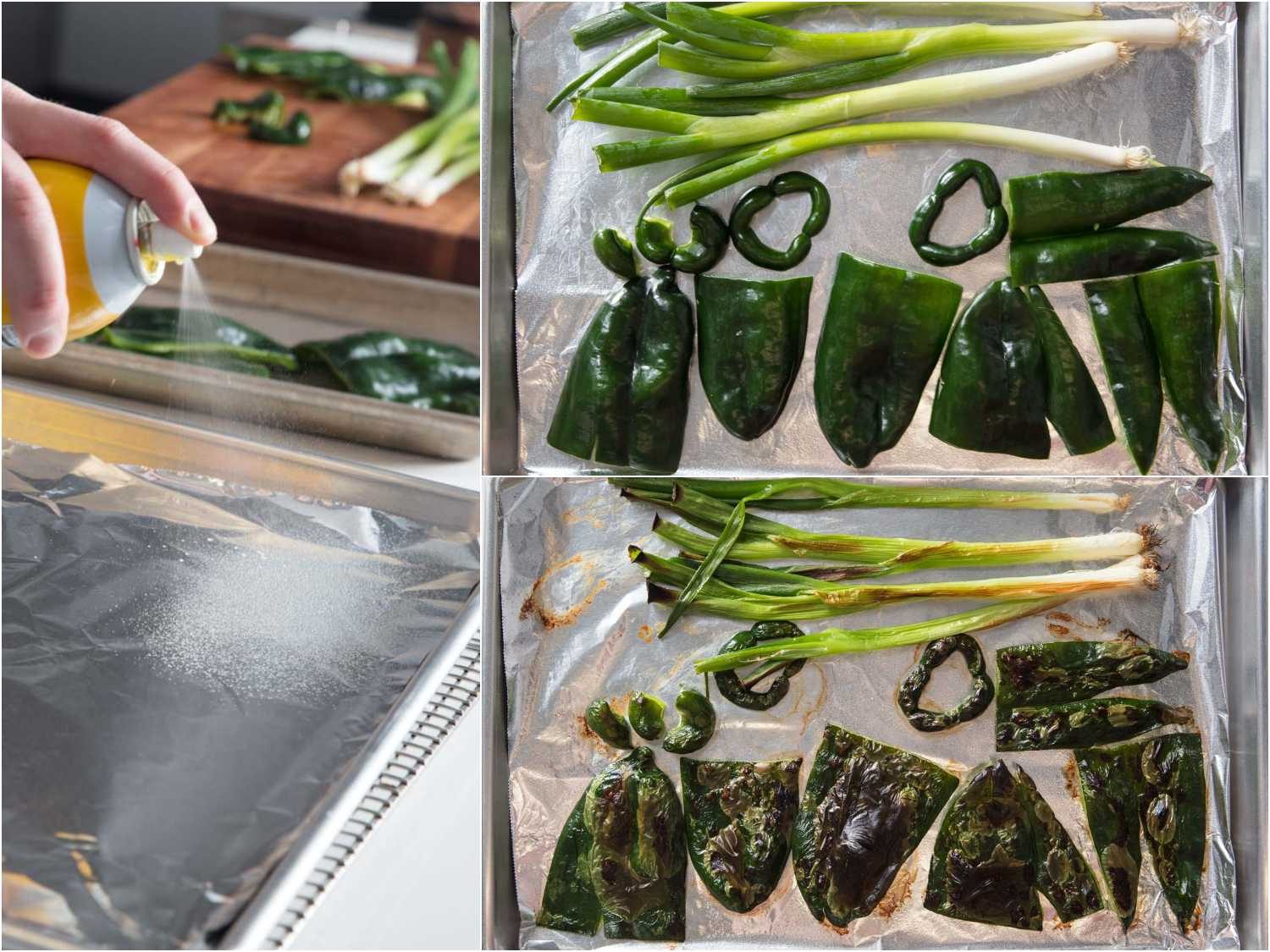
My ode to rajas begins by roasting a couple poblano peppers along with some whole scallions. Rather than tending to and turning them over an open flame, I opt for roasting the vegetables under the broiler, seeing as I’ll be using it later for the oysters. I stem the poblanos, cut them in half lengthwise, and discard the seeds. Then I place the peppers skin-side up on a foil-lined baking sheet that’s been lightly sprayed with vegetable cooking oil, along with some scallions. After lightly coating the poblanos’ skins as well as the scallions with vegetable oil, I pop the sheet tray in the oven until the vegetables are nicely charred.
Charred scallions aren’t usually used for making rajas, but they are a popular accompaniment at taquerias. The last time I visited Mexico City I invariably ended up ordering a side of cebollitas along with my tacos. Seeing as scallions played a role in the Rockefeller recipe, it seemed right to fit them in here, as well.
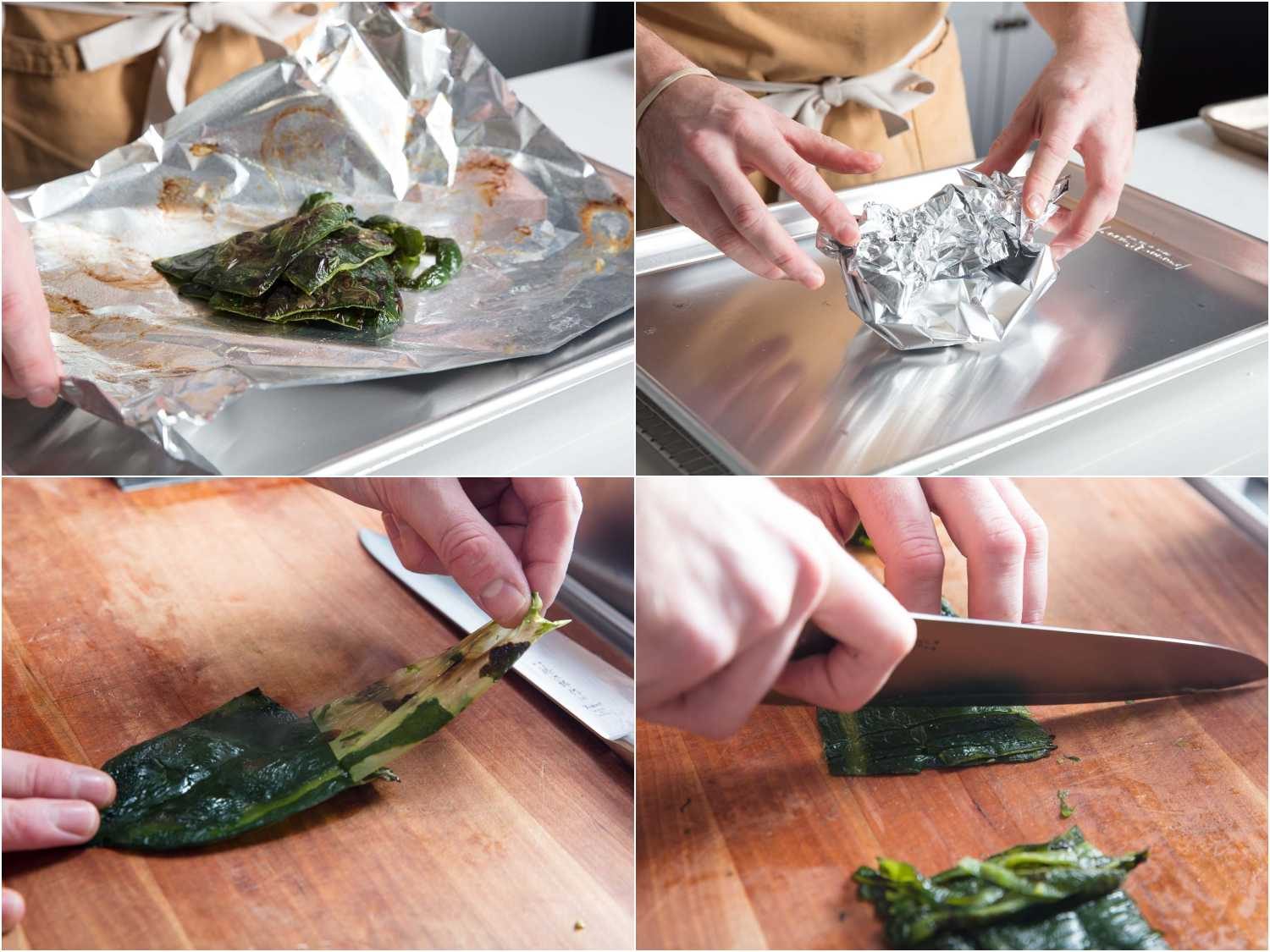
When they’re done, I transfer the scallions to a cutting board, pile the poblano pieces in the center of the piece of foil, and gather the foil to form a pouch around the peppers. This gives the poblanos a chance to steam in the foil for a few minutes to release their flesh from the skins, making it easier to peel away and discard.
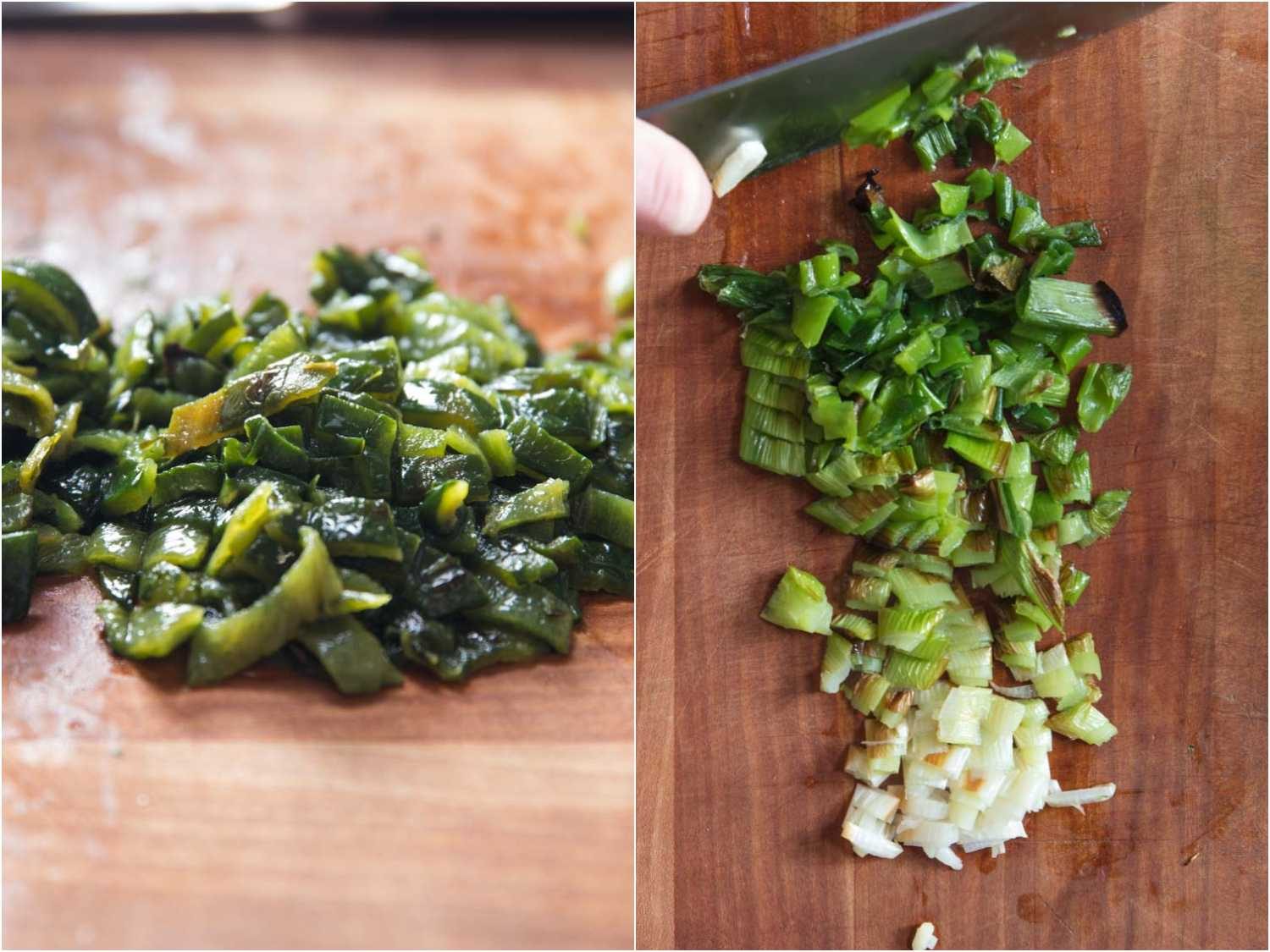
After that, I chop the peppers and scallions up.
Sweat and Smother
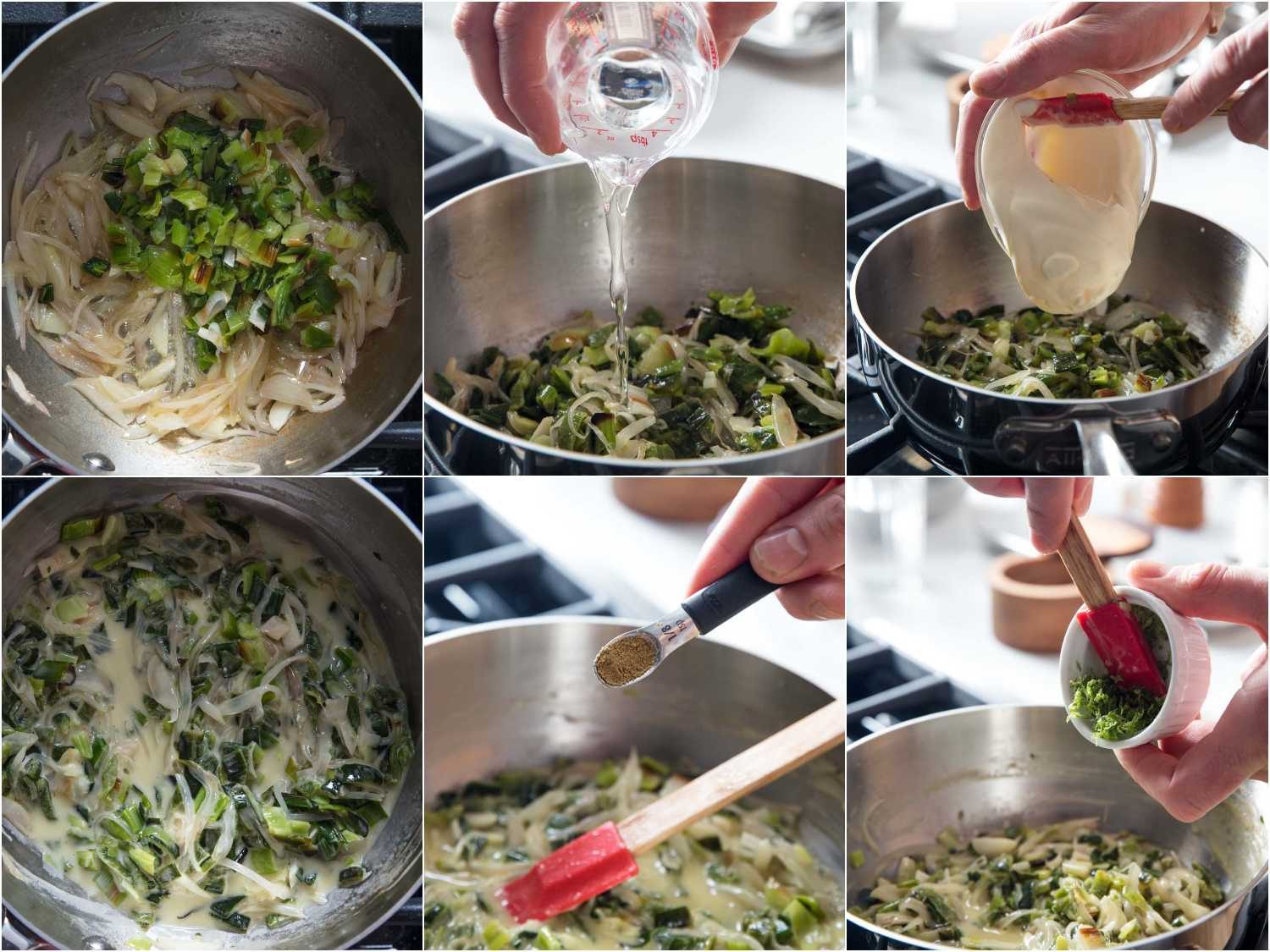
The next steps follow the same basic procedure used for the more classic Rockefeller topping: Sweat down sliced shallots and garlic in butter (I use less butter here as I’ll add in crema later) before adding the chopped poblanos and scallions, and cook this mixture until the moisture from the vegetables has evaporated. I then add a tablespoon of smoky mezcal in place of the absinthe. Again, feel free to leave out the booze if you prefer. To finish, stir in a half cup of crema (crème fraîche or sour cream will work, too), a pinch of ground coriander, and lime zest.
Purée and Pipe
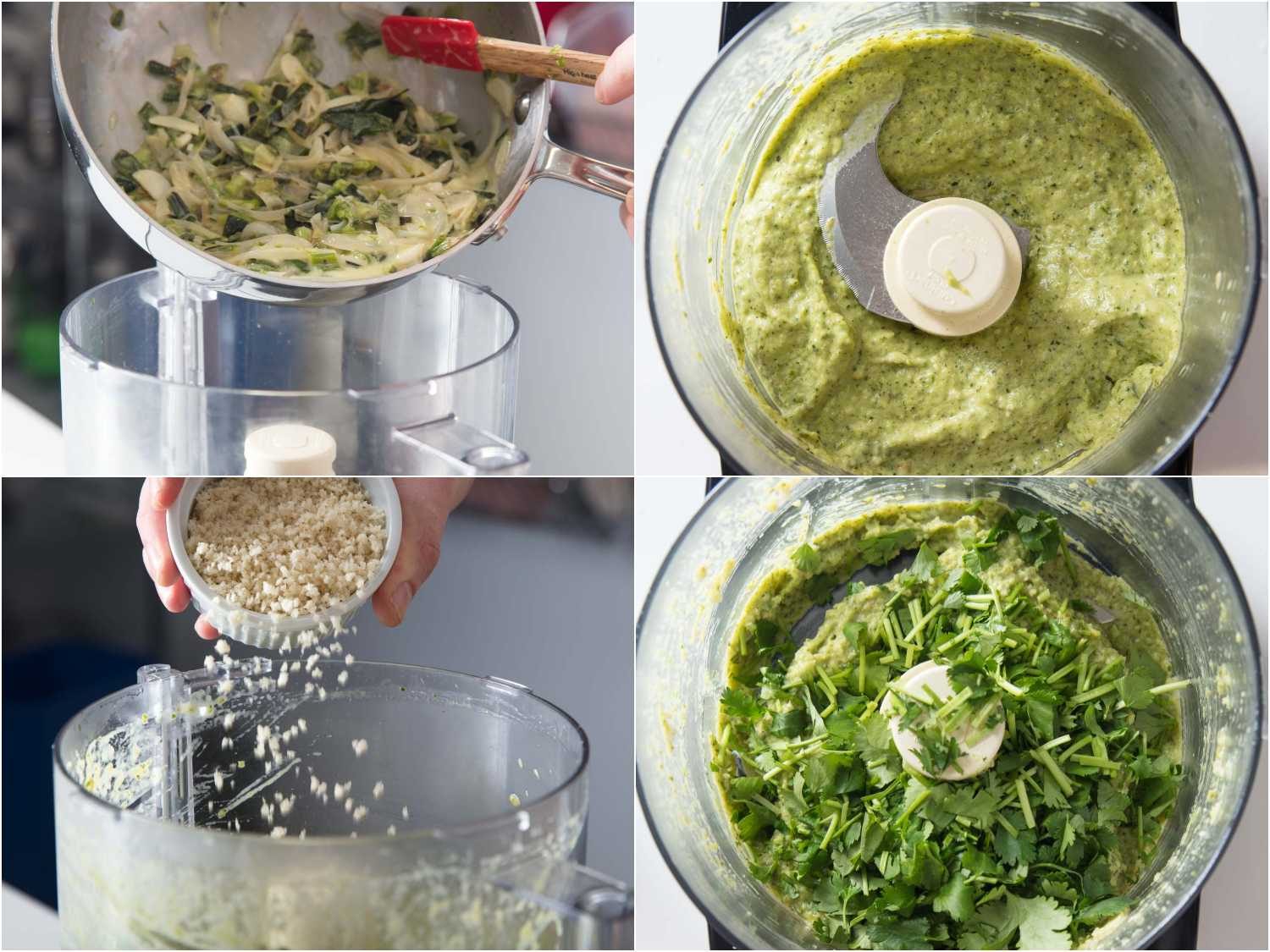
Buzz up the mixture in a food processor, then add roughly chopped cilantro and panko breadcrumbs and process the mixture to a paste. As with oysters Rockefeller, shuck your oysters and then pipe the topping over them. Broil them in the same way, and then serve them up with lime wedges and some mezcal for sipping.
Might it be better than the original? You be the judge.
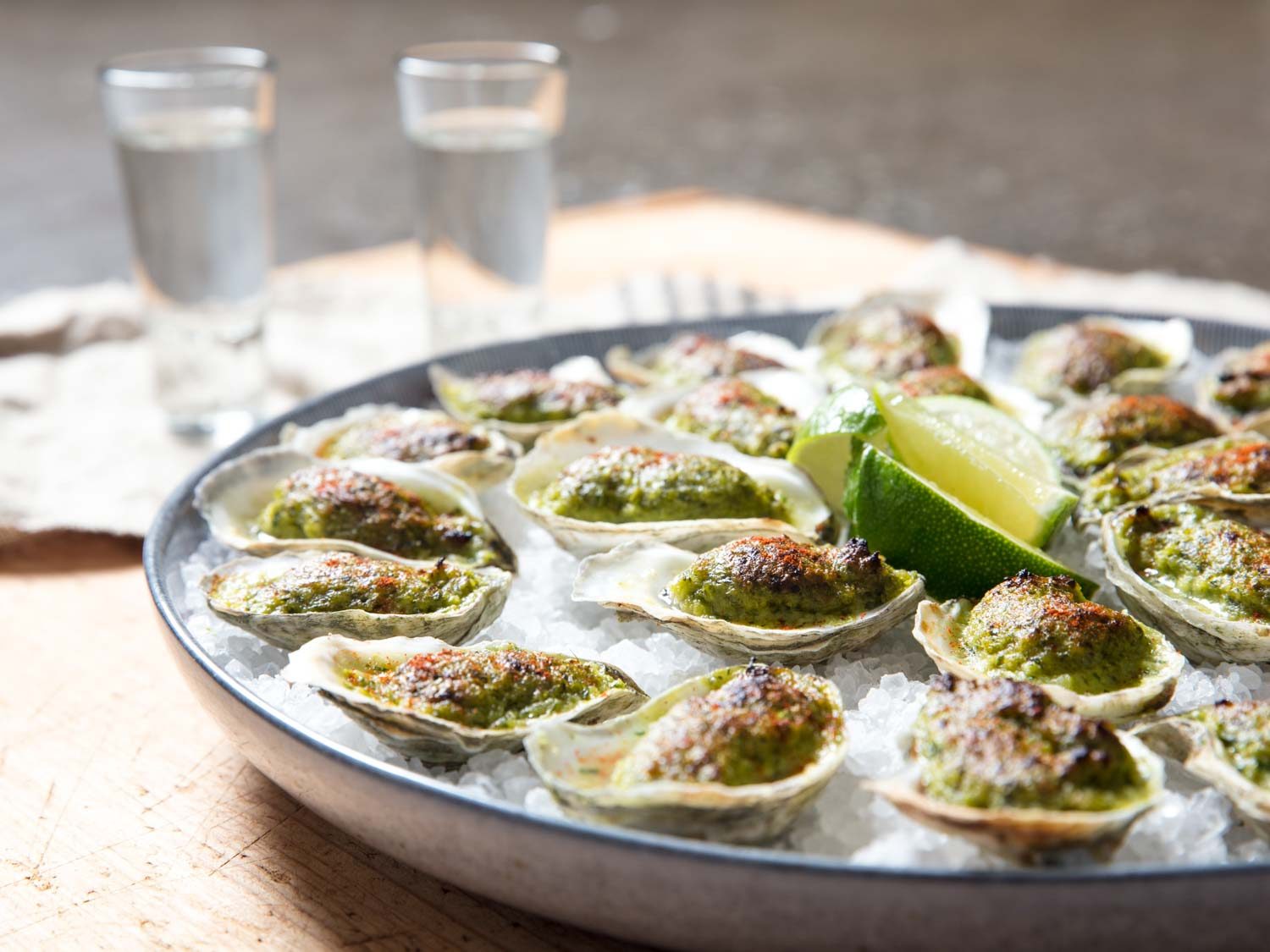
This post may contain links to Amazon or other partners; your purchases via these links can benefit Serious Eats. Read more about our affiliate linking policy.
Source link